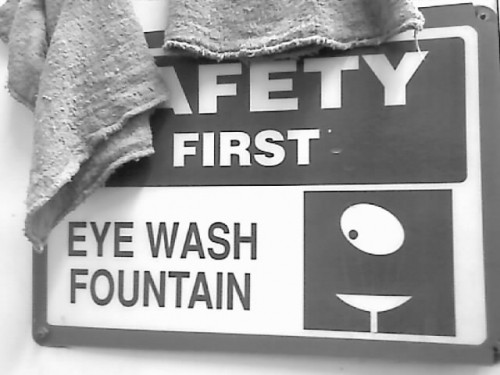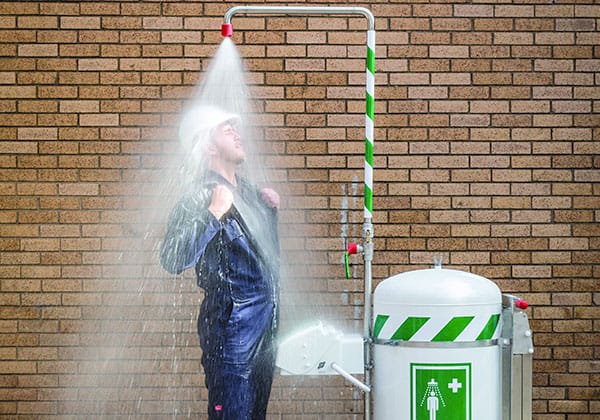Maintaining proper eye hygiene is crucial, especially in environments where eye injuries are common. Eye wash stations play a vital role in providing immediate relief and minimizing damage in such scenarios. Selecting the right eye irrigants and saline solutions for these stations is essential to ensure effective and safe cleansing.
In this article, we will explore the importance of eye wash stations, the types of eye irrigants and saline solutions available, and how to choose the best options for your needs.
Why Are Eye Wash Stations Important?
Eye wash stations are designed to provide immediate treatment to individuals who have been exposed to harmful substances. These can include chemicals, dust, or other irritants that may cause eye injuries. Quick and effective rinsing can prevent further damage and remove contaminants from the eyes.
Immediate Relief and Prevention
The primary purpose of an eye wash station is to provide immediate relief. When harmful substances come into contact with the eyes, every second counts. Eye wash stations offer a quick way to flush out contaminants, reducing the risk of severe injury.
Compliance with Safety Regulations
Many workplaces are required by law to have eye wash stations installed. These regulations ensure that employees have access to immediate care in case of an emergency. Adhering to these guidelines not only promotes a safer work environment but also helps avoid legal repercussions.

Types of Eye Irrigants and Saline Solutions
There are various types of eye irrigants and saline solutions available, each with its unique properties. Understanding these options will help you make an informed decision.
Sterile Saline Solutions
Sterile saline solutions are one of the most commonly used eye irrigants. They are made from a mixture of salt and water, mimicking the natural composition of tears. This makes them gentle on the eyes while effectively rinsing out contaminants.
Buffered Saline Solutions
Buffered saline solutions are similar to sterile saline but include additional buffering agents. These agents help maintain the pH balance of the solution, making it more comfortable for the eyes. Buffered solutions are particularly useful in environments where the risk of exposure to acidic or alkaline substances is high.
Preserved Solutions
Preserved saline solutions contain preservatives to extend their shelf life. While convenient, these preservatives can sometimes cause irritation, especially for individuals with sensitive eyes. It’s important to consider the potential for irritation when choosing preserved solutions.
Non-Preserved Solutions
Non-preserved saline solutions do not contain any preservatives, making them a safer option for individuals with sensitive eyes. However, they have a shorter shelf life and need to be replaced more frequently.
Specialty Eye Irrigants
Specialty eye irrigants are designed for specific types of contaminants. For example, there are solutions specifically formulated to neutralize acids or bases. These specialty irrigants can be more effective than general-purpose saline solutions in certain situations.
How to Choose the Right Eye Irrigant
Choosing the right eye irrigant involves considering several factors, including the type of contaminants you are likely to encounter, the sensitivity of the users’ eyes, and the shelf life of the solution.
Assess the Environment
The first step in selecting an eye irrigant is to assess the environment where it will be used. Identify the types of contaminants that are most likely to cause eye injuries. This could include chemicals, dust, or other irritants. Understanding the specific risks will help you choose an irrigant that is most effective in your situation.
Consider the Users
It’s also important to consider the individuals who will be using the eye wash station. Some people may have more sensitive eyes and require a gentler solution. In such cases, non-preserved or buffered saline solutions may be the best choice.
Evaluate Shelf Life
Shelf life is another critical factor to consider. Preserved solutions have a longer shelf life but may cause irritation. Non-preserved solutions are gentler on the eyes but need to be replaced more frequently. Assess your usage patterns and storage capabilities to determine which option is more practical for your needs.
Check for Compliance
Ensure that the eye irrigants and saline solutions you choose comply with relevant safety standards and regulations. This is particularly important for workplaces, where non-compliance can result in legal issues and fines.

Maintenance and Best Practices for Eye Wash Stations
Having the right eye irrigants is only part of the equation. Proper maintenance and adherence to best practices are equally important to ensure the effectiveness of your eye wash stations.
Regular Inspections
Regular inspections are crucial to ensure that eye wash stations are in good working condition. Check for any signs of damage or contamination and replace expired solutions promptly. Make sure that the station is easily accessible and that all components are functioning correctly.
Training and Awareness
Training employees on the proper use of eye wash stations is essential. Conduct regular training sessions to ensure that everyone knows how to use the equipment correctly. Additionally, raise awareness about the importance of eye hygiene and the specific risks associated with your environment.
Proper Storage
Store eye irrigants and saline solutions in a cool, dry place away from direct sunlight. Proper storage conditions will help maintain the integrity of the solutions and extend their shelf life.
Emergency Protocols
Establish clear emergency protocols for situations requiring the use of eye wash stations. Ensure that all employees are familiar with these protocols and know the location of the nearest eye wash station.
Conclusion
Selecting the right eye irrigants and saline solutions for your eye wash stations is crucial for maintaining eye hygiene and preventing injuries. By understanding the different types of solutions available and considering factors such as the environment, user sensitivity, and shelf life, you can make an informed decision that ensures the safety and well-being of everyone in your workplace.
Regular maintenance, proper training, and adherence to best practices will further enhance the effectiveness of your eye wash stations, providing peace of mind and ensuring compliance with safety regulations.
Investing in the right eye irrigants and maintaining your eye wash stations properly is a small price to pay for the invaluable benefit of protecting your eyes and ensuring a safe working environment.
Call to Action: Shop at Absorbents Online
Protect your eyes and ensure safety in your workplace by investing in high-quality eye irrigants and saline solutions. At Absorbents Online, we offer a wide range of products that meet safety standards and cater to various needs. Don’t compromise on eye safety—browse our collection today to find the perfect solutions for your eye wash stations. With fast shipping and expert customer support, we make it easy for you to maintain a safe working environment. Visit our website now and take the first step towards enhanced eye care!